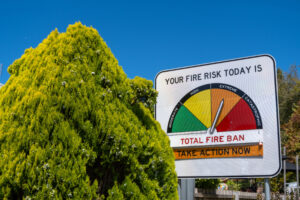
The United States, a nation known for its innovation and intellectual prowess, leads the world in active shooter incidents. This is not a ranking we should be proud of. With so many brilliant minds in our country, one would think we could prevent such tragic events from happening so frequently. Yet, here we are, grappling with a crisis that devastates lives and communities. From a risk management perspective, I believe it’s time we take a closer look at the root causes and seek actionable solutions.
First Principles: Where Did the Fuse Get Lit?
In risk management, I adhere to the tenet of First Principles—the method of breaking down complex problems to their fundamental elements. To address active shooter events, we must look for the origin of the issue. The key is to identify the Root Cause, the initial spark that sets off the chain of events leading to these incidents.
After careful consideration, I’ve identified a primary root cause to active shooter events and a confounding factor:
1. Root Cause: The Mental Health Crisis

The most significant factor contributing to active shooter events is the deteriorating state of mental health in our country. Since the deregulation of mental health institutions in the 1980s, we’ve seen a steady rise in untreated mental health disorders. Many individuals who desperately need help are left without support, and the consequences can be catastrophic.
Mental health disorders, left untreated, lead to dangerous and violent behavior. Unfortunately, many active shooters exhibit clear signs of mental distress before they act, yet the support systems in place to catch these warning signs are inadequate or non-existent.
2. Confounding Factor: Underage Individuals with Access to Firearms
A glaring issue in active shooter events is how underage individuals can access firearms. Often, the perpetrators are young, sometimes teenagers, who somehow get their hands on deadly weapons. This should not be the case.
Gun owners, particularly those with children or young adults in their homes, bear the responsibility of ensuring that weapons are securely stored and inaccessible. If a firearm is used in a tragic event by a minor, those responsible for that minor should face legal consequences.
Where Do We Go from Here?
It’s easy to feel powerless in the face of such a massive issue, but solutions do exist. First and foremost, we need to act on two fronts:
- Revitalizing Mental Health Care: Mental health must become a national priority. We need to restore and expand access to mental health services, ensuring that individuals who need care can receive it before their struggles manifest in harmful ways.
- Gun Control and Accountability: Adults must be held responsible for securing firearms, especially when children or teenagers are present in the home. It may not be a deterrent, but those that contributed should be held accountable – justice.
Conclusion
The active shooter crisis in the U.S. is not unsolvable. We are a country of intelligent, capable people. It’s time we used our collective resources to protect our communities and ensure that no more lives are lost to senseless violence.
I am struck by how quickly the soundbites fade, and we collectively “forget” the tragedy that occurred. We lament lives lost, coupled with a “it will never affect me” attitude, and the result is no proactive work towards solving the problem.
The Solution
Step 1: Devote 30 minutes of your time towards a solution. Contact your state & federal representatives so they are aware this topic is important to their constituency. There are few things more impactful than dedicating 30 minutes to shaping the future.
Step 2: Once awareness reaches a critical mass, our elected representatives will address the issue. Support those that are aligned with your position.
Find and Contact Your Elected Officials
Our elected officials spend billions of dollars on polls to decipher what you think. Leave no doubt. Tell them directly. Your message may be the one that tips the balance toward action. Don’t underestimate your power as a citizen. Have a voice.
Grassroot efforts work.

- Women’s suffrage (1920)
- Civil Rights Movement (1960)
- Gay rights (1970)
- Mothers Against Drunk Driving (MADD) (1980s)
If this resonates with you, stop what you’re doing right now, and take 30 minutes to contact your elected representatives and let them know how you feel.
Be part of the solution and take pride in your individual effort.








